The rocket scientists navigating space from a little warehouse in Adelaide’s inner west
CONVERTING space junk into fuel, inspiring SA kids to send projects to space or navigating the Wild Wild West of space law — there’s no shortage of out of this world work coming out of Brompton.
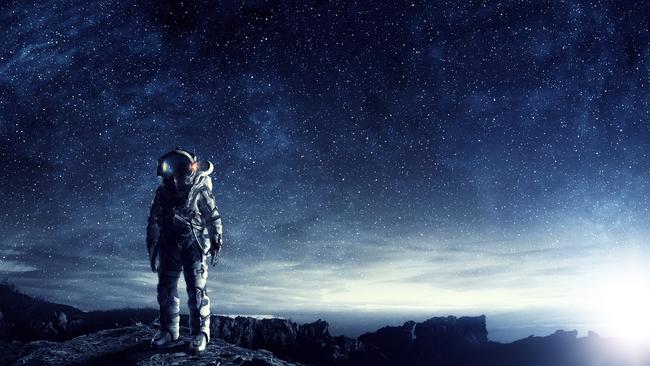
City
Don't miss out on the headlines from City. Followed categories will be added to My News.
- How SA could get a big share of the $400 billion space economy
- Space industry would have similar benefit as submarines program
- Pocket rocket — SA’s shoebox-sized satellite
CONVERTING space junk into fuel, inspiring South Australian kids to send projects to space or navigating the Wild Wild West of space law — there’s no shortage of out of this world work coming out of a Brompton warehouse, as Sophie Perri discovers on the eve of the International Astronautical Congress, in Adelaide from September 25—29.
AWAY from the hipster pubs and cafes of Brompton, on a side street called Wood Ave, is a brick warehouse with a rolled-up garage door.
There’s nothing out of the ordinary about this.
Nothing out of the ordinary about the coloured Post-It notes on the wall, or the old chairs, or the small office window.
Nothing out of the ordinary about the handful of workers inside, shuffling about in old T-shirts and sneakers.
But this place isn’t ordinary.
One only needs to fix their gaze on the two vacuum chambers, two shiny silver hunks of German engineering worth the median price of a house in Adelaide, to figure that out.
So what’s happening in here?
“The short answer is, it is rocket science,” says Dr Paddy Neumann, the bearded fellow behind this space start-up bearing his name.
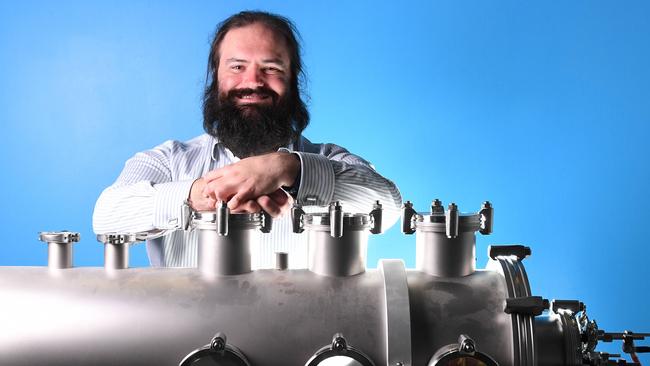
This is Neumann Space. Here, Neumann and his team are working on an ion thruster that converts space junk into fuel. Right now, these vacuum chambers are making plasma (put simple, rocket exhaust) from copper.
“If it’s solid and conductive, we can use it as fuel,” the aerospace engineer says.
“As part of my thesis I tested aluminium, titanium and magnesium — these three metals are called the aerospace metals because they’re light and strong, so you build spacecraft out of them. Therefore space junk is made out of them, so we can recycle them.”
In 2019, Neumann Space will partner with aeronautics company Airbus to test the technology on a mission to the International Space Station.
“The T-shirt slogan is, ‘Mars and back on a tank of fuel,’” Neumann says, now standing between the chambers.
“We can send a robotic spacecraft to Mars, orbit, do stuff there, take measurements, pick up a rock or two from one of the tiny moons of Mars, and bring it back to Earth without needing to refuel ... nothing else can do that.”
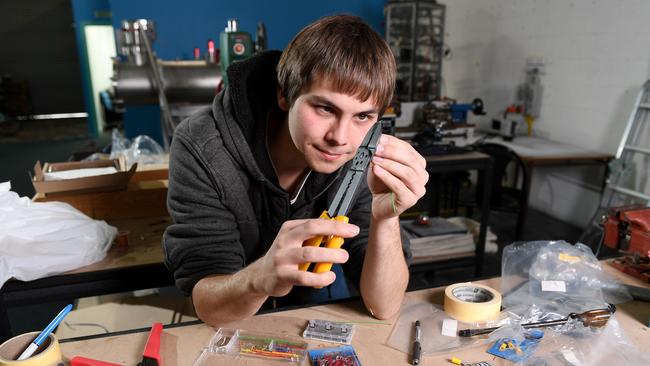
Neumann, who graduated with a Bachelor of Aerospace Engineering (Honours) and a Bachelor of Science specialising in physics in 2006, is originally from Sydney.
He moved his start-up to Adelaide late last year for “numerous reasons”.
“First of all, there’s aerospace manufacturing already present in Adelaide and it’s where Australian new space (start-ups) are starting to cluster,” he says.
“Adelaide is very supportive of novel industries being formed, there’s a large amount of industrial and commercial space becoming available which leads to ‘my God, the rent is so much cheaper’. This space we have here is costing one quarter as much as an equivalent space in an equivalent area in Sydney would cost.
“We’d be foolish to be staying in Sydney when we can get so much more for our money in Adelaide.”
Today is busy. Every day is, really, but this week is particularly manic in the lead-up to the International Astronautical Congress. From September 25-29, the heavyweights of the international space industry will converge at the Adelaide Convention Centre for the major industry conference, which was last in Australia — in Melbourne — in 1998.
Neumann gestures to a big calendar with coloured notes highlighting the events he wants to attend, and the ones in which he’ll be speaking.
“I have three papers of which I’m co-author and will be presenting two of them,” he says.
“Ian (Whitchurch, Neumann Space chief executive) will be presenting the third … he’ll be talking on some simulations a university in Germany did to support our work with the thruster.” Whitchurch, who has been upstairs working, stops by to spruik the magnitude of the conference.
“This conference is where the whole of the space industry is going to be,” he says.
“Every major agency, NASA from the US, the European Space Agency, all the minor space agencies … it will be a great opportunity for Australia to introduce ourselves to the world regarding space.
“Our challenge is what we do after everything has been packed up and the delegates have gone home.”
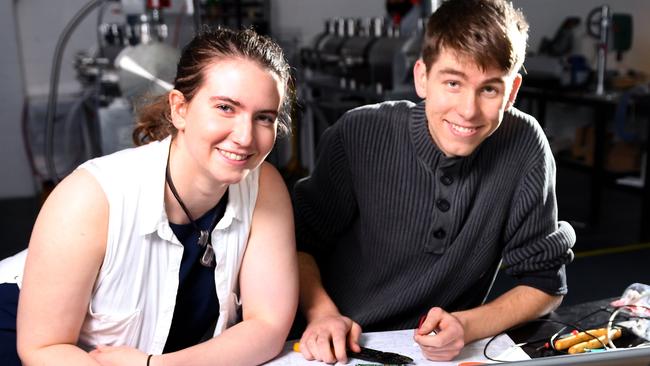
While Australia doesn’t yet have a space agency — the government is looking into this — the industry in Adelaide is growing.
Monika Stankiewicz, one of the six team members working alongside Neumann and Whitchurch, is grateful to be part of it all.
When the architectural design graduate met Ian and Paddy through medieval fencing — “it’s how we all met,” she says — she thought her lack of science background would immediately eliminate her from working with the team.
“When I heard they were coming to Adelaide I said, ‘What you’re doing is so inspiring, I wish I had studied engineering so I could be more useful to you.’ And they went. ‘Well, you’ve got a sales background, project background, why don’t you do project management stuff with us?’ So I went …’yes’,” she says.
“My long term personal dream would be to work in space architecture type stuff … in terms of that field, there are already space architects working in the world. NASA has an in-house one.
“Through working at this company, I can gain a lot of direct industry experience.”
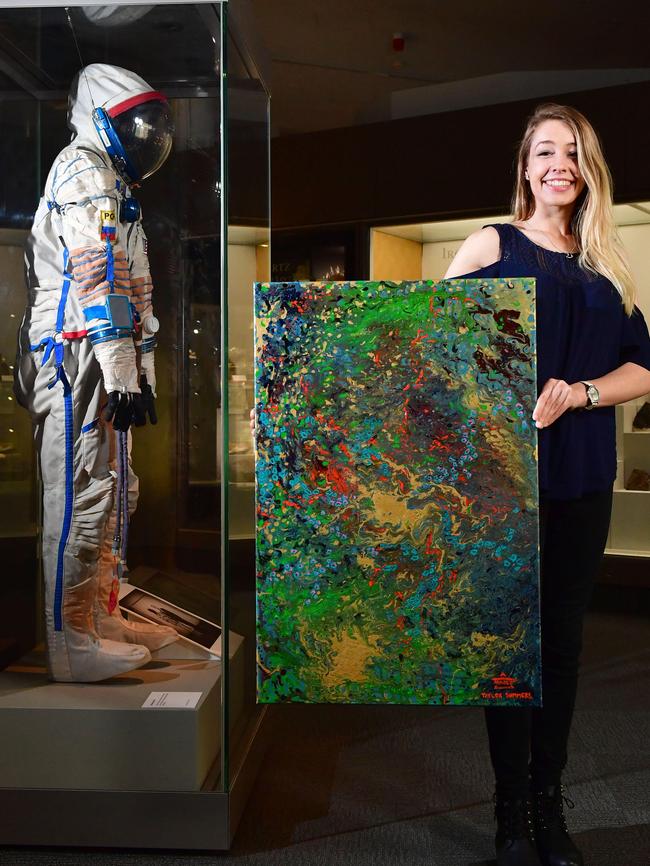
To inspire the next generation, Neumann Space is creating the first school space mission with the State Government, where three public schools will get the chance to send a project to space.
As Stankiewicz says, it’s about getting kids interested in space, and recognising that as we move forward as a country, a lot more of our needs are going to be “space dependent”.
“GPS, all our communications, surveillance … if we don’t move forward as a country and build up our kids with the skills for that century, we’re gonna be left behind,” she says.
“We’ll be the ones paying bills instead of actively innovating.
“If kids can get familiar with it from a young age, it’s going to be a lot less scary.”
Working at Neumann Space has made her realise the space industry needs people with all kinds of qualifications.
“When I was a much younger version of me, I remember looking at space stuff and going ‘oh, only the super intelligent geniuses can do that, it’s way too advanced for me’. But then as I got older, and through this company, I’ve realised space is a lot more accessible to people from all fields,” she says.
“You don’t have to be an engineering or science diehard. Kids that like working in workshops for example, with welding ... someone has to build the components to get up there (in space).
“Even if someone has a law background — at the moment, space law is the equivalent of the Wild Wild West, there isn’t much regulation out there.
“It’s generally been shown that, particularly with the development of a space agency, you gain jobs across all the sectors.”
It really is enough to get ordinary people seeing stars.
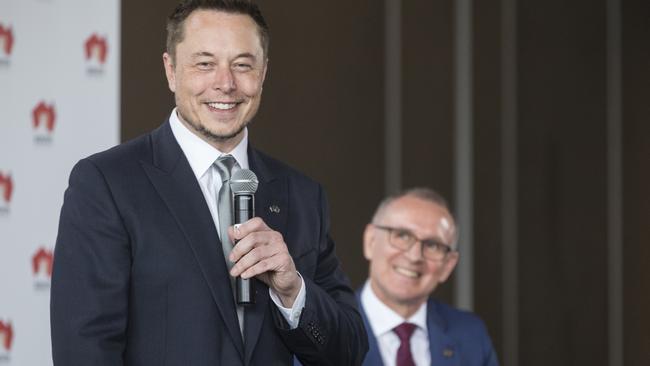
Fast facts
● This is the 68th International Astronautical Congress.
● It’s the first time Adelaide has hosted the congress, and the second time it has come to Australia.
● More than 4000 space professionals are expected to attend.
● Tickets for full paying participants are $1653.
TECH billionaire Elon Musk will give an update about his company SpaceX’s plans to develop technology that would help colonise Mars.
Musk, recently in Adelaide to announce plans to build the world’s biggest lithium-ion battery at Jamestown, will speak at the space congress on Friday, September 29.
It’s going to be the hottest ticket at the event, but don’t feel like you’re going to miss out - the talk will be livestreamed. Visit iafastro.org.


